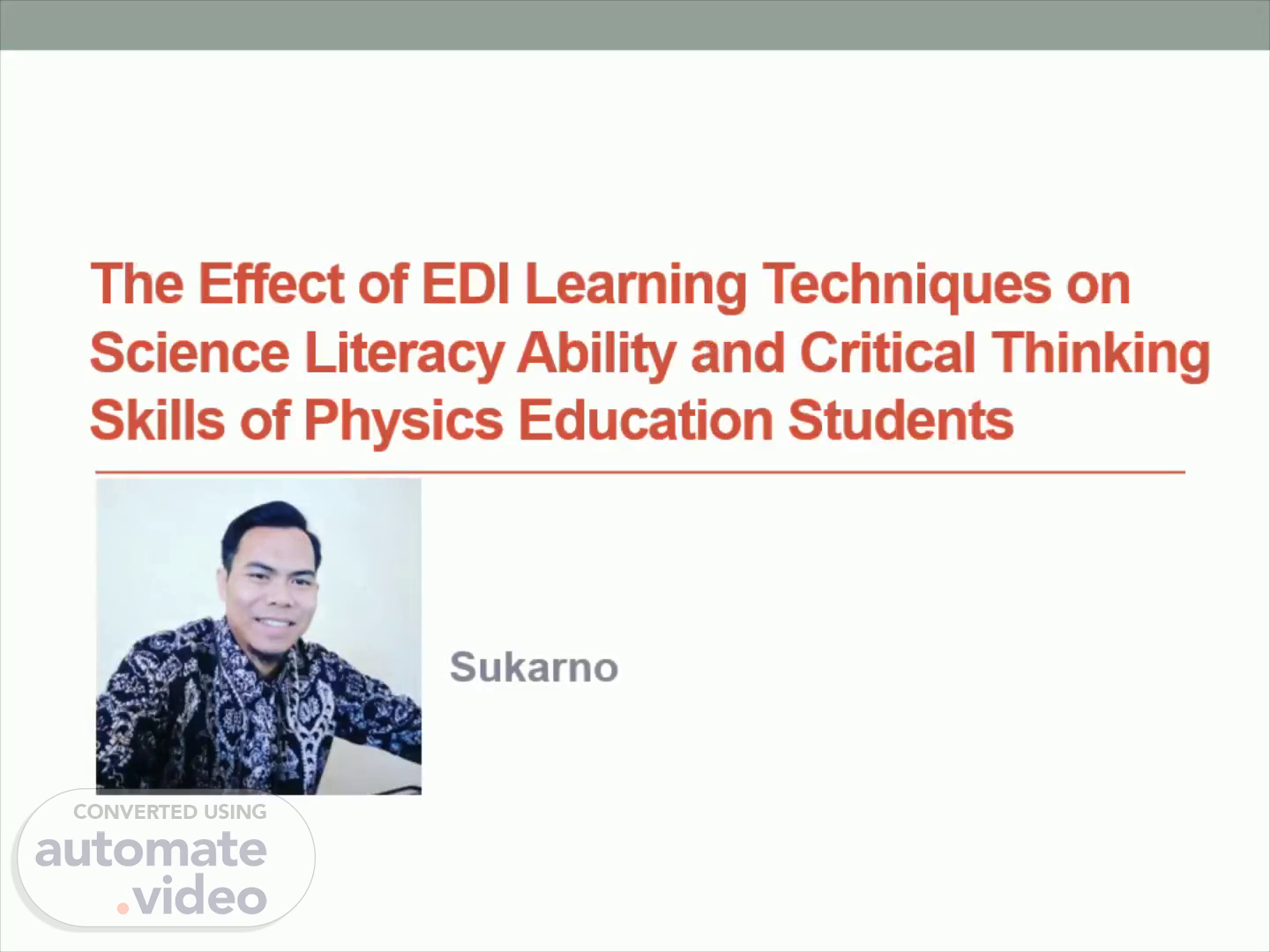
Page 1 (0s)
The Effect of EDI Learning Techniques on Science Literacy Ability and Critical Thinking Skills of Physics Education Students.
Page 2 (15s)
Introduction. One of the efforts to improve the quality of human life is through education. One of the branches of science that deserves serious attention in the field of education in science Science learning is directed at improving students' scientific literacy and critical thinking skills Various studies have been carried out to improve scientific literacy skills, both for students, teachers, and prospective teachers. One technique that is believed to be used as an alternative or tested to improve scientific literacy and critical thinking skills is the EDI technique.
Page 3 (39s)
Introduction. EDI is a learning technique that involves Explaining-Discussion-Implementation Explaining referred to in this study is a brief explanation by the lecturer (teacher) Doing by Student Implementation by Students an teacher to carried on the student's tasks during the learning process.
Page 4 (53s)
Method. This study uses a quantitative approach with a quasi-experimental method. Therefore , data were obtained through tests that were compiled based on the indicators of these two variables. The sample used in this study were students of physics education in semester 4, totaling 24 people. To test the hypothesis, the T-test and one-way ANOVA test were used with the help of SPSS 25. The scientific literacy skills measured included: (1) Scientific knowledge and can apply its knowledge, (2) Understanding of the characteristics of science ( 3) Scientific awareness , ( 4) Involvement in various activities related to scientific issues. The critical thinking skills measured in this study include (1) data interpretation, (2) analysis, (3) evaluation, and (4) inference. The instrument used in the form of multiple-choice questions 20 questions for each variable. Thus each aspect of the literacy above consists of 5 questions..
Page 5 (1m 29s)
Results a nd Discussion. Aspect Category Pretest (%) Posttest (%) Enhancement (%) Description Science Literacy High 16,66 45,83 29,17 Increase Moderate 29,18 37,50 8,32 Increase Low 54,16 16,67 37,49 Decrease Total 100 100 Critical Thinking Skill High 29,18 41,67 12,49 Increase Moderate 29,18 45,83 16,65 Increase Low 41,64 12,50 29,14 Decrease Total 100 100.
Page 6 (1m 52s)
Results and Discussion. Science Literacy Sum of Squares df Mean Square F Sig. Between Groups 9410.917 11 855.538 16.031 .000 Within Groups 640.417 12 53.368 Total 10051.333 23 Critical Thinking Skill Sum of Squares df Mean Square F Sig. Between Groups 10738.542 10 1073.854 13.592 .000 Within Groups 1027.083 13 79.006 Total 11765.625 23.
Page 7 (2m 16s)
Conclusion. Based on the data and discussion as described above, at the end of this paper, it can be concluded that there has been an increase in scientific literacy skills and critical thinking skills for prospective physics teacher students in the 'innovation physics learning' course with the EDI technique. Students with high abilities increased by around 29.17% from the previous 16.66%. Meanwhile, students with moderate abilities increased by around 8.32%. Meanwhile, students with low scientific literacy skills experienced a decrease of 37.49%. As for critical thinking skills, the "high" category increased by 12.49%, the "moderate" category increased by 16.65%, while the number of students with the ability in the 'low' category decreased by 29.14%. Based on the ONOVA test, the increase that occurred was included in the significant category..
Page 8 (2m 52s)
ruiya',ot48 nata cnacH60*..t.